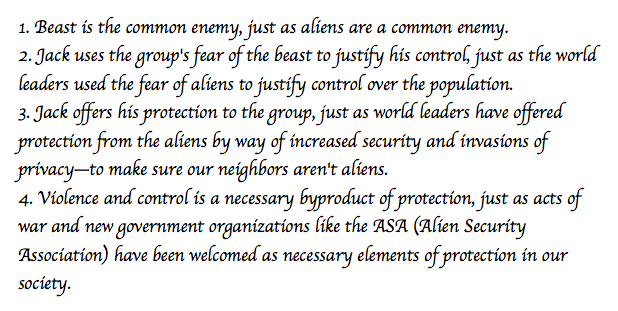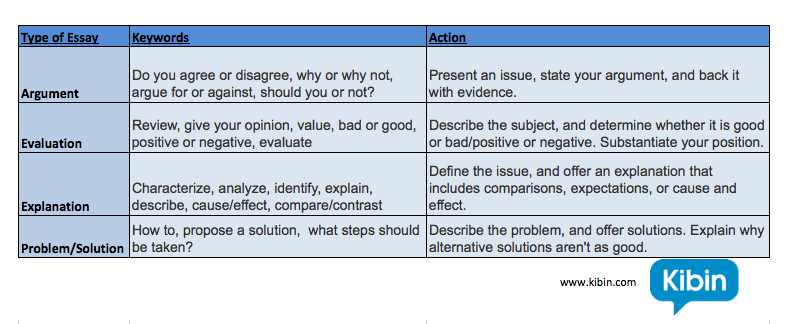One of the most challenging tasks in any class is facing the in-class timed essay. There is something extra difficult about having to write a strong essay under the pressure of a ticking clock. This blog post will give you all the tools you need to learn how to write a timed essay in 45 minutes or less.
How to Write a Timed Essay: Before the Test
While you may only have a few precious minutes to take your actual timed essay, you should spend several hours preparing for the exam. Just as you would study for a math or science test, you need to organize your thoughts and materials in advance of your timed English or history essay.
Follow these six tips to make sure that you walk into the test ready to rock your essay.
- Don’t wait until the last minute to study. Give yourself plenty of time to familiarize yourself with the material. Carefully read the work provided in class, and review your notes.
- Memorize important facts, dates, names, etc. The more you have stored in your brain, the better you’ll be able to provide solid supports and arguments during your exam.
- If the timed essay is “open book,” mark down important elements and insights in advance with a highlighter, sticky notes, or notecards with page numbers and quotes. When it comes to test time, you’ll know exactly where to go for information, and you won’t waste time trying to find “that perfect quote.”
- Get to know the possible prompts, and carefully review your study guide, if one is provided. Otherwise, look over old exams, if you can, to see what kinds of questions are typically asked in this class.
- If you’re really nervous, practice writing under pressure before your test. Set a timer for the same amount of time you’ll have during the actual test, and work on writing a coherent essay about a sample prompt or an important topic from class.
- If the topic of your test is pretty common (i.e., iconic literature like Shakespeare or topics in American history), you might find some helpful study tools on Spark Notes. Another great resource is Shmoop.com. So check them out!
For our example, let’s say that we’re taking an open-book timed essay on William Golding’s book Lord of the Flies. In advance of the test, I would, of course, read the book from cover to cover. I would mark up key ideas with a highlighter and sticky notes. I’d also check out the Spark Notes to get some ideas and perspective on the work. If you want to follow along with our sample timed essay, first check out this Spark Notes video summary of Lord of the Flies.
How to Write a Timed Essay: Minutes 1-5, Understand Your Topic
Now that you are familiar with the material and ready to take your timed essay, let’s talk about what you’ll need to do during your test.
First of all, you need to relax. Take a deep breath, and don’t get stressed out because you’re feeling rushed. You need to feel in control of the time you have to avoid test anxiety. It’s important to focus on the task at hand and not allow your mind to wander or worry.
Now that you’re relaxed, get to work. For the first 1 to 5 minutes, read and re-read the essay prompt to get an understanding of what you’re being asked. It’s important to take the time to understand the prompt so that you don’t go wandering off and writing about something totally incorrect or irrelevant. Don’t skip this step!
Underline keywords, and check to see whether the question has more than one part.
For our example, I’m going to use this sample prompt:
How does Jack use the beast to control the other boys? Compare this to an example in today’s society of a person or institution using something frightening to control other people.
When reading and re-reading this prompt, I would underline the important words:
How does Jack use the beast to control the other boys? Compare this to an example in today’s society of a person or institution using something frightening to control other people.
It’s important to determine what type of essay your teacher is asking from you.
Use this table for clues:
This table breaks down four basic types of essays: argument, evaluation, explanation, and problem/solution. The keywords are words you can look for to unlock what direction your teacher wants you to go. And the action column let’s you know what the goal of your essay should be.
In this example, the prompt is asking for an explanation essay. I know this because it asks me to analyze the beast and compare it to an example from real life. Knowing what type of essay I’m working with will help me focus my thesis and supports.
How to Write a Timed Essay: Minutes 6-15, Organize Your Response
Set aside a few minutes to prepare your thoughts. First jot down ideas and notes related to the question. This is called a memory dump. This takes the pressure off your brain of having to recall this information as you are structuring and writing your response. Here’s an example of a memory dump:
With your ideas and notes dumped onto paper, it will be easier to organize your thoughts into a coherent order. The next step is to make an informal outline of the major points. This step is important because it will allow you to stick to your topic and ensure that you don’t leave out any important details.
Don’t worry about building an epic, detailed outline, like the one I developed for the 5-paragraph essay outline, but definitely sketch out the important arguments you want to cover.
Place a number beside each point to organize what you want to address first. Start with the most important idea, and work down to the least important. This way, if you run out of time, you’ll have already covered the more important stuff.
In our sample essay, according to the prompt, I need to correlate Jack and his beast with a real-life fear that is used to control a real-life society. I don’t want to start a political discussion in this blog post, so I’m going to use a fake idea having to do with an alien invasion. Don’t worry; none of this is true… yet.
Here’s a sample rough outline of the points I want to cover in my essay, starting with the most critical first:
 In doing this outline, I’ve uncovered four important arguments to develop. I’m ready to start digging into the real work of writing the essay.
In doing this outline, I’ve uncovered four important arguments to develop. I’m ready to start digging into the real work of writing the essay.
How to Write a Timed Essay: Minutes 15-40, Develop Your Essay
Now that you have a rough outline, it’s time to develop each of your points and write them out in your exam.
I won’t develop the entire essay in this blog post, but I’ll show you how I might write the thesis and point number one.
To develop my thesis statement, I’d simply make an argument and include a summary of each of the points I plan to make in the body text.
Here’s my thesis:
In William Golding’s book The Lord of the Flies, Jack creates a mythical beast creature as a way to band the boys together under his oppressive leadership; this is similar to how the world leaders have used the alien invasion to control the Earth’s population through fear of a common enemy and the belief that oppression is necessary for safety.
Then I’d make my first argument:
In the book Lord of the Flies, Jack bands his group of boys together by creating a common enemy in the beast. This is similar to how the government has bound our nation together against our greater enemy, the aliens from the Andromeda galaxy. In both cases, having a common enemy has ignited a sense of solidarity and being “in it together.” Anyone who is not against the beast, or the aliens, can be considered an enemy to the cause.
Then I’d include some supports with direct quotes from the book. I would, of course, have already marked off these quotes during my study time with sticky notes that say “beast” or “Jack”:
The boys in the Lord of the Flies have never seen the beast, yet they are afraid of it. During an assembly of the boys, one of the Littluns says, “I was frightened… and I saw something moving among the trees, something big and horrid” (85). This echoes a recent news story where a woman recounted her meeting with an alien, and although she hadn’t actually seen it, she said she saw the shadow of one pass by her window.
As I write my essay, I’ll expand on each of the points in my rough outline and support each with a direct quote from the book. It’s important to avoid making big, general statements. Every correlation I make needs to be supported.
Finally, I will write my conclusion, which will sum up my arguments and offer a greater insight.
For more information on writing better essays, I suggest checking out this awesome article, How to Write a Great Essay About Anything.
How to Write a Timed Essay: Minutes 40-45, Final Edit
Don’t forget to leave a few minutes to review and edit your work to ensure it makes sense. Because you won’t be able to have your paper professionally edited or edited by a parent or peer before you turn it in, your teacher probably won’t grade you as hard for grammar mistakes as she would otherwise. However, you still want your work to make sense and to be as error free as you can make it, so leaving a few minutes for editing and revision is helpful.
Now you know how to write a timed essay. The process doesn’t have to be stressful. Remember to always prepare in advance, take the time to understand the prompt, organize your thoughts, write detailed and supported information, and review your essay before you turn it in.
If you plan your time wisely and follow all of these steps, you have nothing to fear…except maybe aliens. Good luck!



